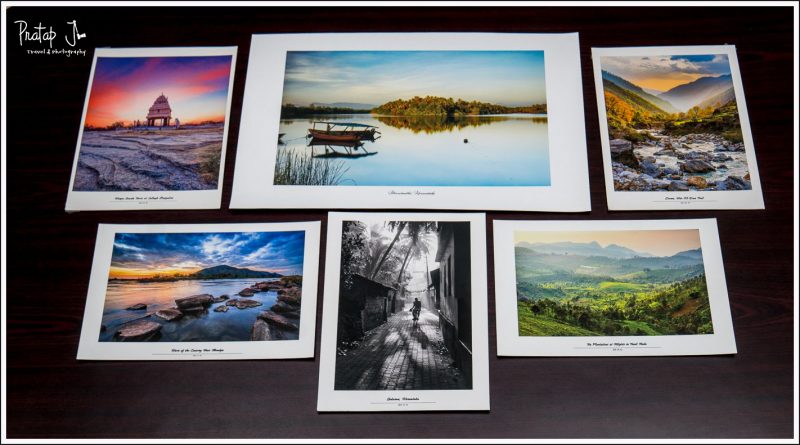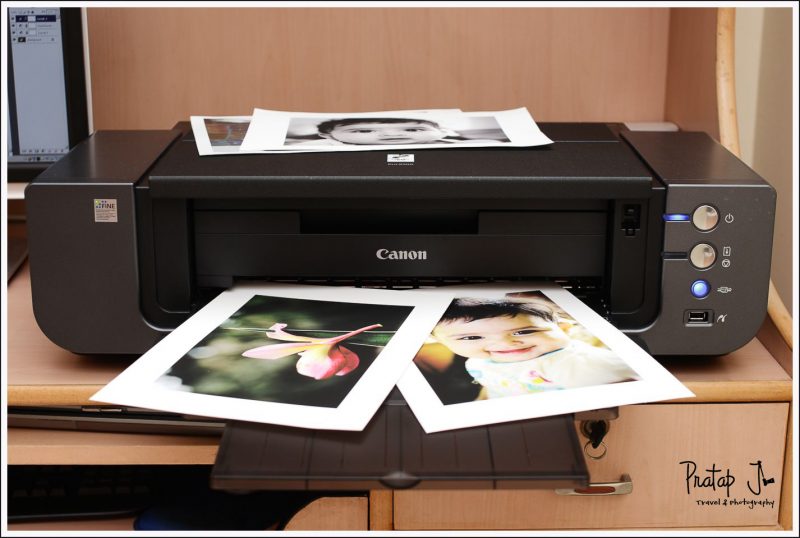Photography is a wildly popular hobby in today’s times. Digital has helped make instant gratification a habit. SLR or point n’ shoot – viewing the LCD at the back of the camera screen is something we have all gotten used to. This is the first level of satisfaction – and generally comes after we go through the creative process of composing and exposing the frame. And then, after releasing the images from the confines of the memory card, we share them over the internet with friends and family. Comments via social networking sites and email make us happy until the next time we pick up the camera. Unfortunately, there ends the life cycle of most photographs.
There is something which hasn’t changed over time, but is mostly forgotten now a days. And that is, the joy of holding an image on print. This is a feeling that one has to experience, or rediscover, to understand what it means. I am sure we have all held 6×4″ or 5×7″ prints taken during the days of film. If you look in your closet and pull out those prints, you are sure to remember how it feels to physically touch and feel an image you’ve taken. A print in hand generally involves social interaction that includes conversations about the photographs. After all, what use is a photograph if it does not invoke feelings, memories and discussions? In many ways, sites like Flickr and Facebook are been built upon our basic need to interact.
While the simple pleasures of holding a photograph in three dimensional space cannot be replaced by technology, the number of photographers actually printing their images is surely on the decline. There are couple of reasons for this.
- During the days of film, one was forced to print an image because there was no other way to see the results, but not so now
- It is far more convenient to upload images to social networking sites, than to go to a neighbourhood lab and get prints
- Printing is certainly expensive, compared to the zero cost of uploading to FB and Flickr
- Printing involves getting into the nitty-gritties of color management, sharpening, crop-factor and file types
- Giving away your high-resolution image to a local lab for printing may result in theft – unless you are dealing with a reputable vendor
- Storing images physically certainly needs more effort than dumping away images on your computer
- Unless handled carefully, and printed using archival technology, prints deteriorate over time
- It is difficult to share printed photos with friends and relatives who are not in close physical proximity
- And finally, printing is not a trend or a fad, and most newbies have never been exposed to the joy of holding a large sized print in hand
I have spoken very generically till now. But what about the intermediary and advanced photographer? Folks from these categories are the ones who own a DSLR, keep abreast with technology, and spend money on photographic accessories and lenses. Even if you don’t consider yourself to be advanced in your skills by any measure, the very fact that you purchased an SLR indicates that you want better results from your gear. And yet, most of today’s digital SLR photographers haven’t embraced printing as a medium of displaying their work. When was the last time a photographer friend of yours handed you a portfolio of his or images in print?
There is a certain charm in the exercise of printing. Just like how using a tripod in the field forces you to slow down and concentrate on that one image you are composing, printing forces you to evaluate your own work more critically than you would otherwise. Because every print comes at a price. Every print is a physical entity. With digital, we don’t think twice about piling up bad photos. One finger is constantly on the next button. But with a
handful of prints, you pay more attention to each photograph. As a photographer, you are forced to self-critique the image and justify the action of printing. As someone viewing, you are obliged to pay attention to the effort that has gone in producing the image. There is nothing old school about this. This is also a facet of photography. And if you are serious about buying the best you can afford, what is stopping you from being serious about ensuring your end result is the best, and free from clutter?
For most hobby-to-getting-serious SLR owners, the first tryst with printing comes when they enter competitions. Sure, there are online competitions. But the ones that require to submit prints, or the ones that print winning entries in a magazine, or photography Salons are still around. Sooner or later you are going to come across such competitions and you are going have to print your photographs. So the next part of this article is about the recipe for a good print.
Before I conclude this part, I want to talk about a new revolution – a device known as the iPad (and its clones). In my opinion, the iPad is a revolutionary device. I think that is because it has taken the multimedia experience away from the computer table to the hands of the viewer. Personally, I hated reading ebooks. Like me, there are so many people who still prefer the smell and feel of a paperback. But such folks are today aligning their preference towards reading off a tablet. Because you can hold a tablet in your hand, just as you would hold a book. We are hardwired to enjoy the experience of touching and feeling, and that isn’t going to change any time soon. So then you may ask – why print when you can load images onto an iPad? I would say, you don’t have to print if you own an iPad. By all means make it your primary medium of displaying your best work. But until tablets can be hung on a wall, prints are here to stay 
In the next part, I will discuss how to calibrate your monitor.






No comment yet, add your voice below!